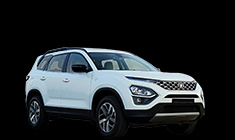News
Jaguar CX-17 Crossover Concept previews iQ[Al] Platform
British luxury and sports car maker Jaguar unwrapped the CX-17 Crossover Concept at the ongoing Frankfurt Motor Show in Germany. This crossover concept is a showcase of the direction that future Jaguars will take in terms of the platform on which they will be underpinned. The CX-17 crossover concept is built on an all-aluminium platform dubbed the iQ[Al], an architecture that will serve as the light weight base for future Jaguar cars.
Notably, the production version of the CX-17 crossover won't be the first Jaguar to use the iQ[Al] platform. In fact, Jaguar hasn't even announced the production of the CX-17 crossover and continues to remain tight lipped about this concept's future. The iQ[Al] platform will play host to the upcoming luxury sedan that Jaguar will build in 2015. This sedan will be the British car maker's competitor to the likes of the Audi A4 and the BMW 3-Series car models. Dubbed the baby-Jag, the car will use an all-aluminium architecture in the form of the iQ[Al] platform.
Also, next generation petrol and diesel engines with a focus on fuel efficiency will be used on the new Jaguar sedan. The new platform is a flexible one, and will eventually serve as the base of a range of new Jaguar cars and possibly even SUVs/crossovers. The usage of aluminium as the base of the iQ[Al] architecture, will allow Jaguar to build light weight cars, touted to be class leaders in terms of performance, dynamics, fuel efficiency and lowering tail pipe emissions.
The production of the new car at Solihull, UK, is expected to create no less than 1,700 new jobs. Tata Motors, the owners of Jaguar-Land Rover since 2008, have set out a multi-billion dollar investment towards new product development. Notably, 15,300 crore rupees (1.5 billion British pounds) have been invested on the iQ[Al] platform alone. From being in the red during Tata Motors' acquisition, Jaguar and Land Rover have bounced back spectacularly, both in terms of sales and profit margins.



![Jaguar CX-17 Crossover Concept previews iQ[Al] Platform](/sites/default/files/styles/check_extra_large_for_review/public/Jaguar%20C-X17%20Crossover%20Concept%201.jpg)
![Jaguar CX-17 Crossover Concept previews iQ[Al] Platform](/sites/default/files/styles/check_extra_large_for_review/public/Jaguar%20C-X17%20Crossover%20Concept%202.jpg)
![Jaguar CX-17 Crossover Concept previews iQ[Al] Platform](/sites/default/files/styles/check_extra_large_for_review/public/Jaguar%20C-X17%20Crossover%20Concept%203.jpg)
![Jaguar CX-17 Crossover Concept previews iQ[Al] Platform](/sites/default/files/styles/check_extra_large_for_review/public/Jaguar%20C-X17%20Crossover%20Concept%204.jpg)
![Jaguar CX-17 Crossover Concept previews iQ[Al] Platform](/sites/default/files/styles/check_thumb_review_detail/public/Jaguar C-X17 Crossover Concept 1.jpg)
![Jaguar CX-17 Crossover Concept previews iQ[Al] Platform](/sites/default/files/styles/check_thumb_review_detail/public/Jaguar C-X17 Crossover Concept 2.jpg)

![Jaguar CX-17 Crossover Concept previews iQ[Al] Platform](/sites/default/files/styles/check_thumb_review_detail/public/Jaguar C-X17 Crossover Concept 4.jpg)















